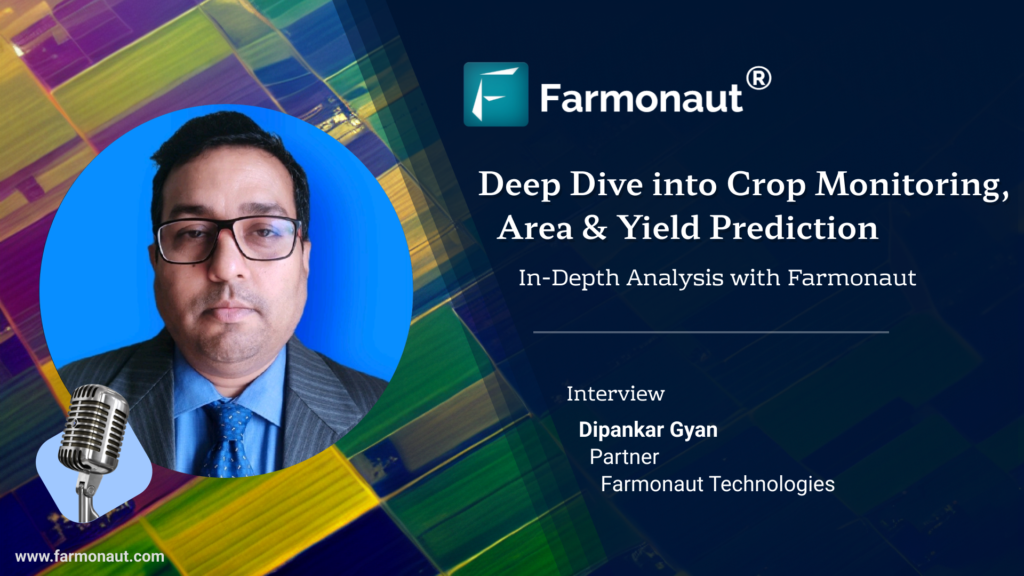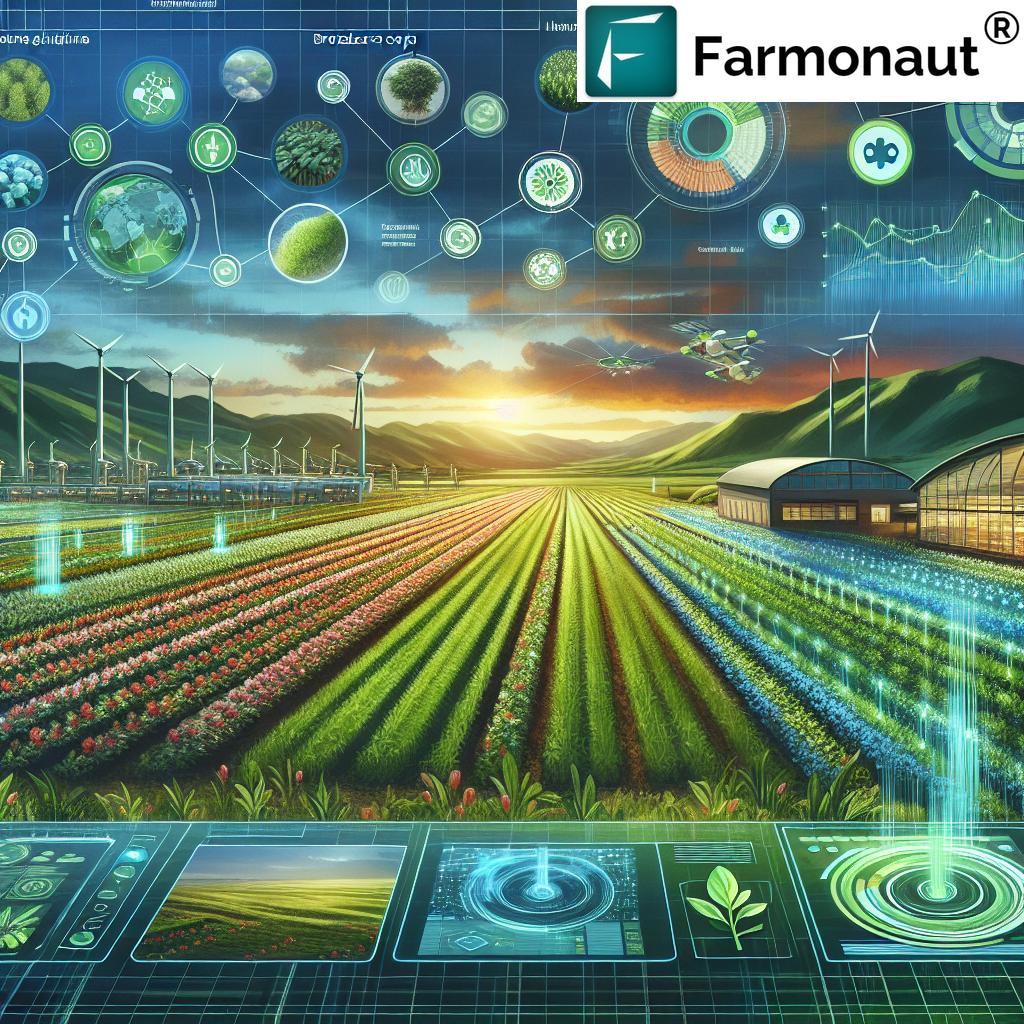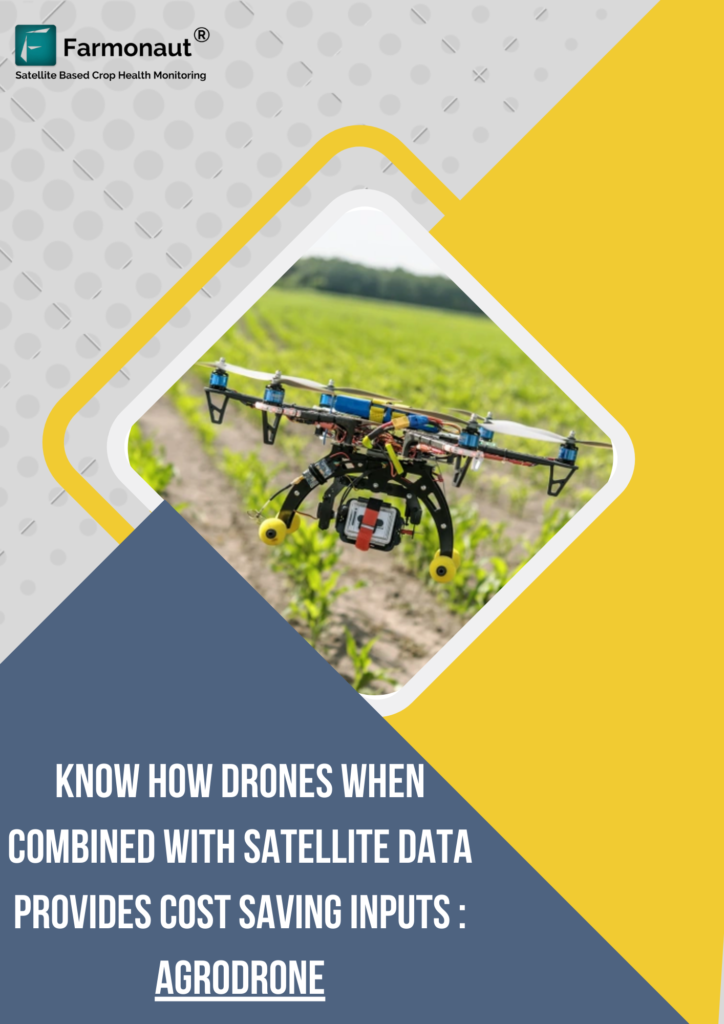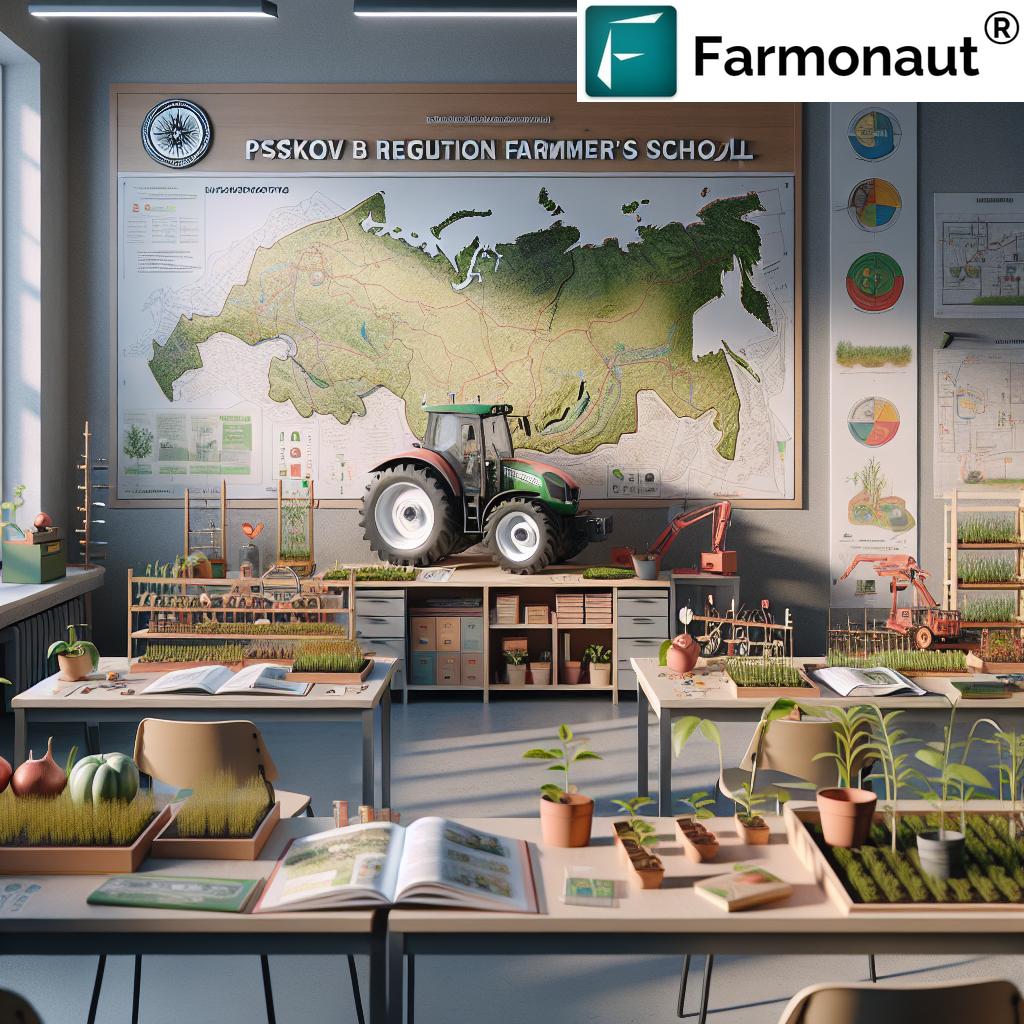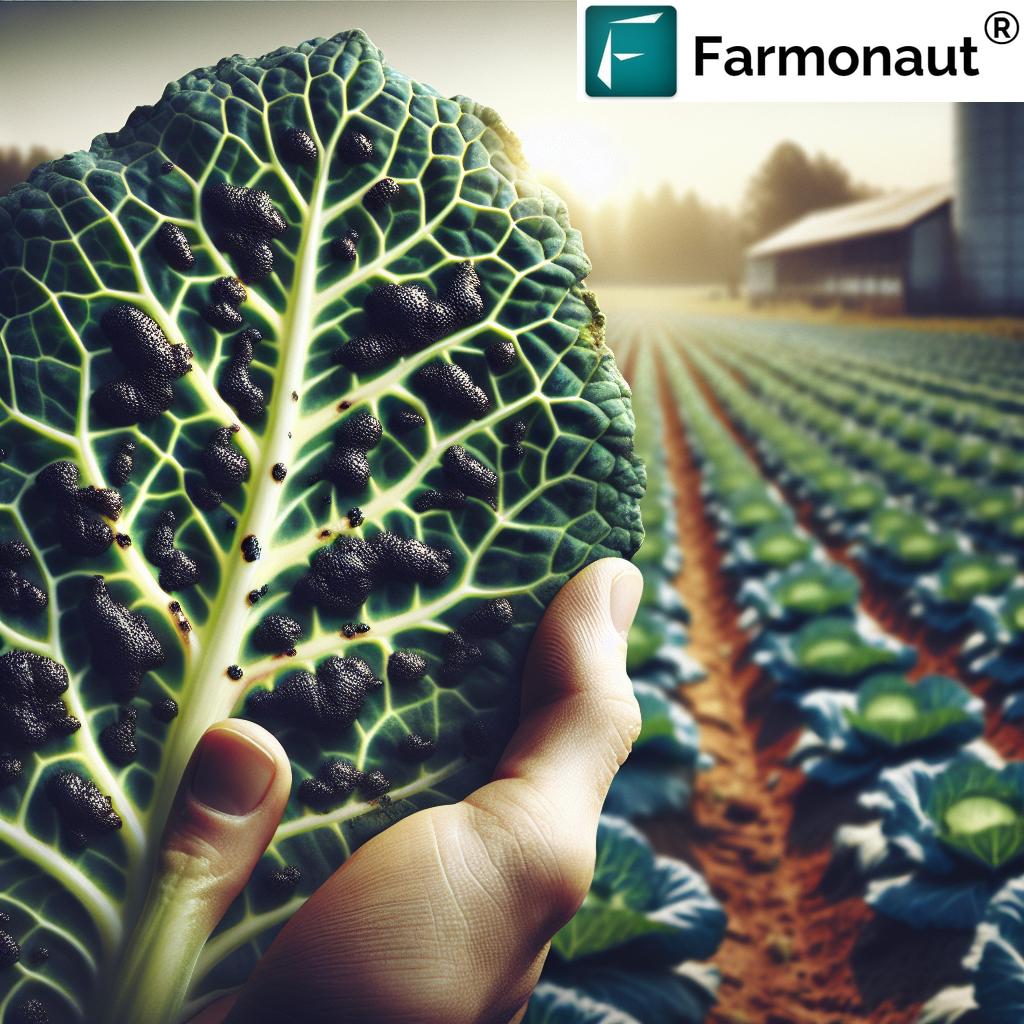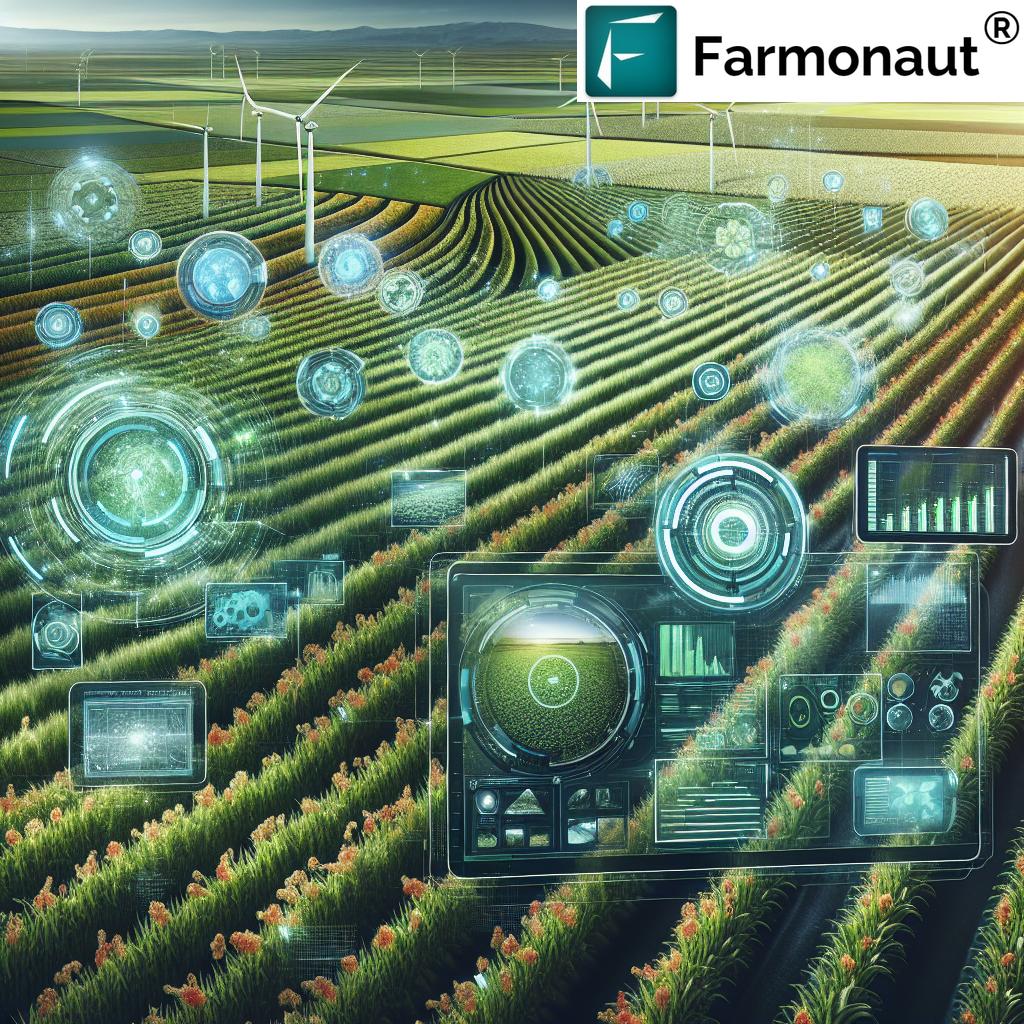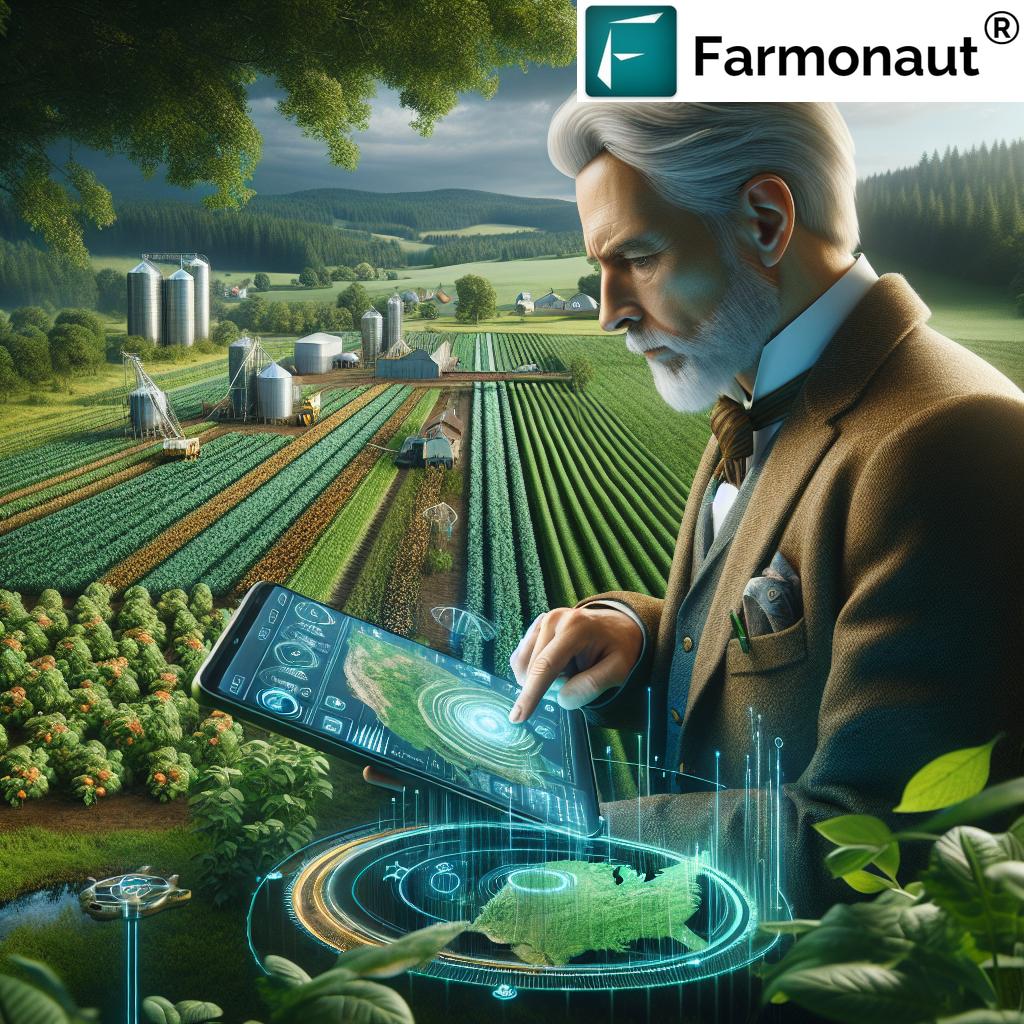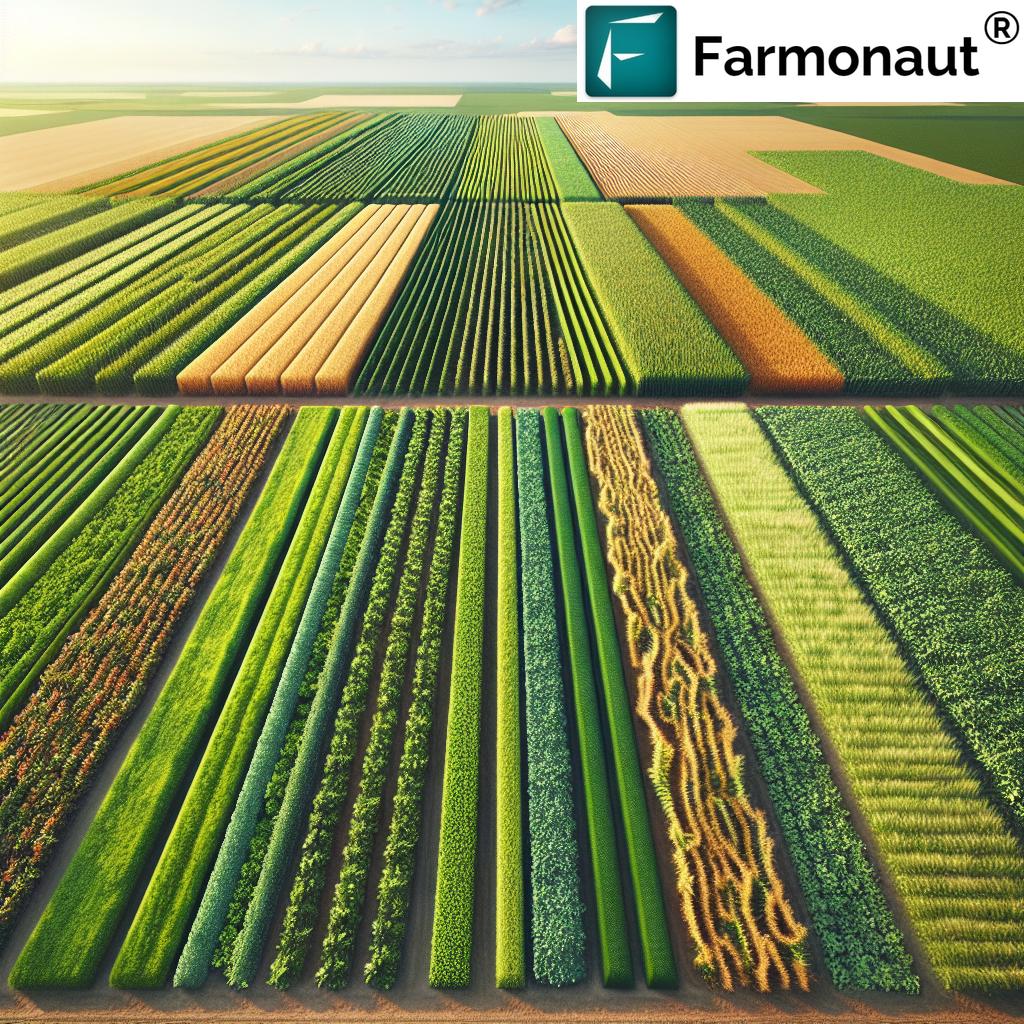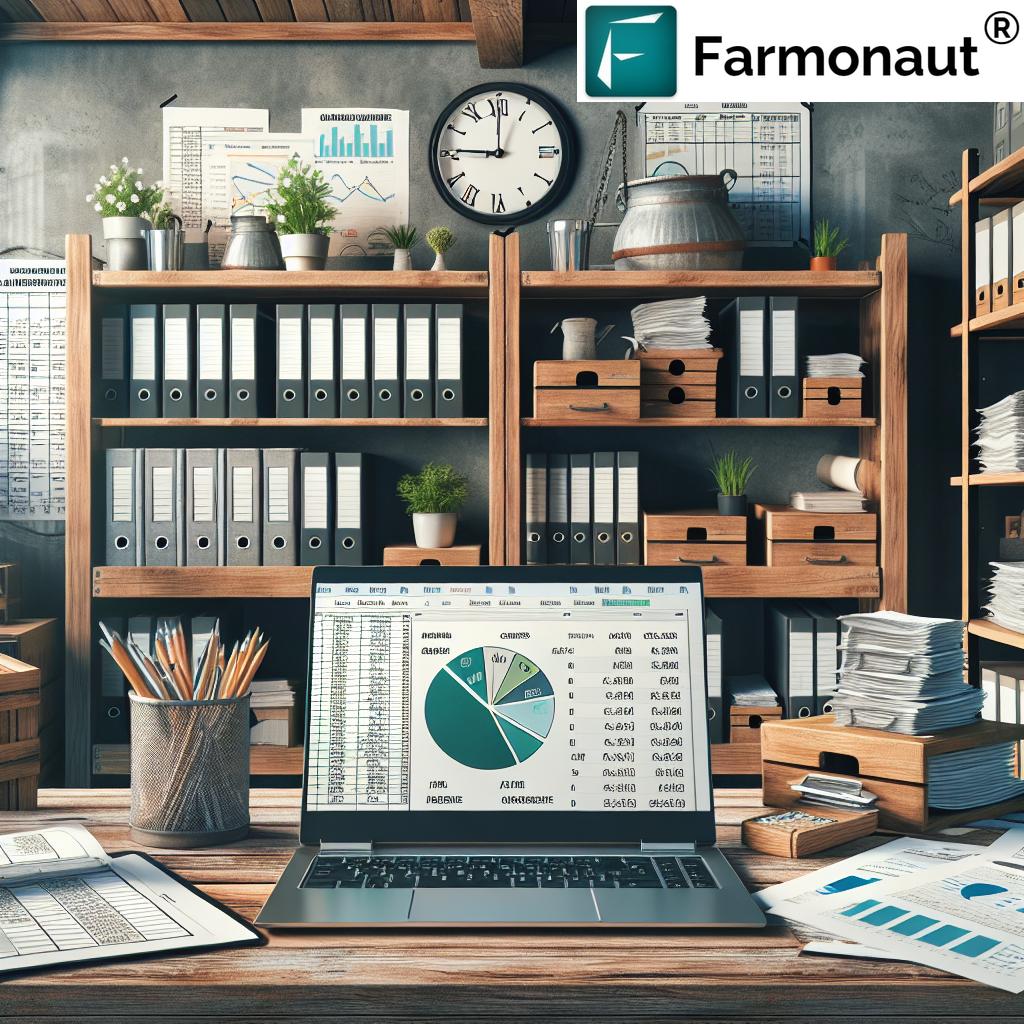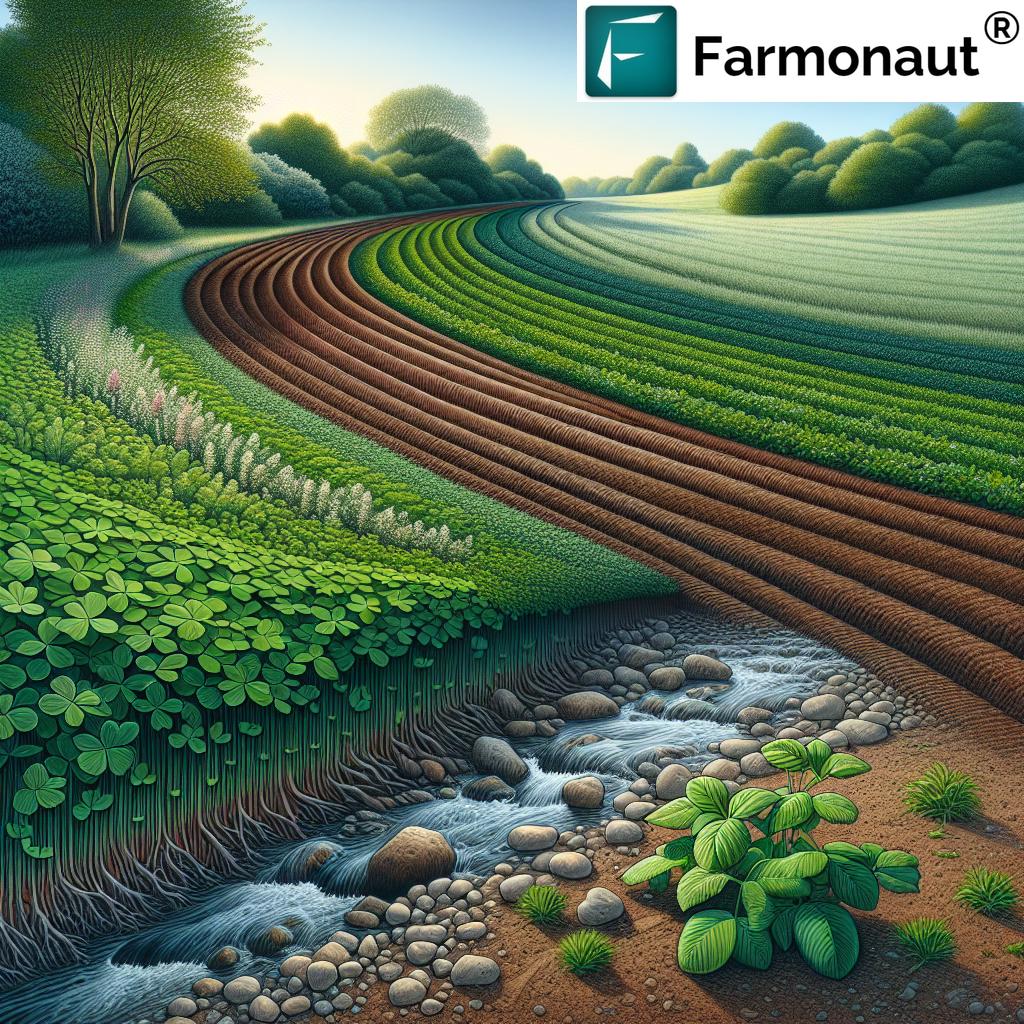Top 6 Types of Sustainable Agriculture for a Greener 2025
Table of Contents
- What Is Sustainable Agriculture?
- Why Types of Sustainable Agriculture Matter in 2025
- Sustainable Agriculture Types: An Overview
- Comparative Summary of the Top 6 Sustainable Agriculture Types
- 1. Organic Farming
- 2. Agroforestry
- 3. Conservation Agriculture
- 4. Integrated Pest Management (IPM)
- 5. Permaculture
- 6. Regenerative Agriculture
- Essential Practices for Sustainable Agriculture in 2025
- Role of Satellite Technology in Sustainable Farming
- Future Outlook for Sustainable Agriculture in 2025
- FAQ: Sustainable Farming in 2025
- Start Your Sustainable Agriculture Journey with Farmonaut
“Agroforestry can increase farm biodiversity by up to 30% compared to conventional monoculture systems.”
What Is Sustainable Agriculture?
Sustainable agriculture refers to farming systems that are environmentally sound, economically profitable, and socially responsible. Unlike industrial or conventional farming—which often relies heavily on synthetic inputs, intensive monocultures, and results in soil degradation—sustainable farming types are designed to maintain ecosystem health, conserve natural resources, and safeguard the livelihoods of agricultural communities.
The primary focus of these types of sustainable agriculture is on improving soil health, reducing chemical use, conserving water, and promoting biodiversity, while ensuring that farming remains viable for both present and future generations. As we approach 2025, these goals are becoming more critical than ever due to intensifying climate change impacts, dwindling water and soil resources, and soaring global food demand.
Sustainable farming practices emphasize:
- Efficient resource use and management
- Soil conservation and enhancement of soil fertility
- Biodiversity preservation
- Reduced reliance on chemical pesticides & fertilizers
- Minimized environmental footprint
- Economic viability for farmers and communities
- Social responsibility and community empowerment
Why Types of Sustainable Agriculture Matter in 2025
In 2025, the types of sustainable agriculture chosen by farms and communities will shape the global food supply, ecological stability, and economic security. The urgency to adopt sustainable agriculture types stems from:
- Climate change impacts: More frequent droughts, floods, pest outbreaks, and weather extremes threaten conventional crop yields and food security.
- Dwindling natural resources: Unsustainable water use, soil erosion, and loss of arable land make resource conservation vital.
- Rising consumer demand: Awareness about health, environment, and food quality is driving popularity for organic and eco-friendly produce.
- Regulatory changes: Stricter bans on hazardous chemicals and calls for lower carbon footprints are accelerating the transition.
- Economic viability: Diversification, resilience, and reduced input costs are essential for smallholder and large-scale farmers.
- Technological advances: Innovations like digital agriculture and satellite monitoring are making sustainable systems more attainable than ever.
“Organic farming uses 45% less energy per unit of output than traditional agriculture methods.”
Sustainable Agriculture Types: An Overview
This article explores the six leading types of sustainable agriculture that are shaping farming in 2025:
- Organic Farming
- Agroforestry
- Conservation Agriculture
- Integrated Pest Management (IPM)
- Permaculture
- Regenerative Agriculture
Each of these sustainable agriculture types brings unique strengths for addressing global challenges in food, health, environment, and rural livelihoods. Understanding their practices, impacts, and applications will empower you to choose the right approach for your land, crops, and community—whether you are a farmer, policymaker, or eco-conscious consumer.
Comparative Summary of the Top 6 Sustainable Agriculture Types
| Type of Practice | Key Features | Estimated Environmental Impact | Potential Yield Change (Estimated %) | Biodiversity Benefits (Est. Value) | Real-World Example |
|---|---|---|---|---|---|
| Organic Farming | No synthetic inputs, crop rotation, composting, green manure, biological pest control | Soil health: High Biodiversity: High Water use: Efficient |
-5% to -20% (compared to industrial methods) | 30% higher pollinator & soil biota diversity | Organic tomato or apple farms in California |
| Agroforestry | Integrates trees/crops/livestock, improves land cover, carbon sequestration | Soil: High Carbon: Very high Biodiversity: High |
0% to +20% after establishment | Up to +30% farm biodiversity | Silvopasture systems in Kenya & Uganda |
| Conservation Agriculture | No/minimum tillage, permanent soil cover, crop rotation | Soil: Very high Water: High Erosion: Low |
0% to +10% (resilient to climate variability) | +20% soil biodiversity | No-till wheat in US Midwest |
| Integrated Pest Management (IPM) | Biological/cultural/mechanical/chemical pest control, monitoring, precision inputs | Pesticide reduction: High Beneficial insect increases |
0% to +15% | +25% beneficial insects | IPM in California vineyards |
| Permaculture | Ecological design, perennial crops, polyculture, water harvesting, minimal input | Ecosystem services: High Resource use: Very low |
Varies, long-term stable yields | +35% habitat diversity | Community forest gardens in India |
| Regenerative Agriculture | Restores degraded soils, cover cropping, holistic grazing, carbon sequestration | Carbon: Extremely high Soil resilience: High |
+5% to +30% (after several years) | +40% soil organism population | Regenerative coffee in Uganda & Kenya |
1. Organic Farming: The Foundation of Sustainable Agriculture Types
Organic farming is among the most recognized types of sustainable agriculture. It eschews synthetic fertilizers, pesticides, and genetically modified organisms (GMOs), instead relying on natural processes and ecosystem-based practices.
Key Features of Organic Farming
- Strict avoidance of synthetic chemical inputs
- Crop rotation to manage pest cycles and improve soil fertility
- Use of green manure, composting, and animal manures for natural nutrient cycling
- Biological pest control — encouraging beneficial predators and natural pest suppression
- Preservation of on-farm biodiversity and pollinator habitats
Organic practices naturally reduce the risk of soil degradation, nutrient runoff, chemical residues, and pesticide-related health issues. They promote the long-term sustainability of agricultural systems while supporting rural community health.
Impact of Organic Farming in 2025
- Higher biodiversity of plants, pollinators, and soil organisms (+30% compared to conventional)
- Reduced greenhouse gas emissions and energy use (about 45% less per unit output)
- Increasing consumer demand worldwide for certified organic food
- Helps meet stricter agrochemical regulations in many regions
- Sometimes reduced yields (-5% to -20%) vs. conventional—but offset by premium prices and environmental gains
Farms embracing organic practices play a critical role in creating healthier food systems for present and future generations.
Curious how organic farming supports eco-friendly pest management? See this amazing video for practical tips:
For advanced satellite-based monitoring of soil health and crop vitality in organic systems, Farmonaut’s platform delivers actionable insights—enabling chemical-free productivity and efficient irrigation. Download our web or mobile app:
Bio-inputs, rotation, integrated livestock systems, and natural crop protection are what keep organic agriculture thriving. For global supply chain transparency, our blockchain-based product traceability system ensures authenticity and prevents fraud in organic and other sustainable food chains.
2. Agroforestry: Integrative Land Management Boosting Carbon & Biodiversity
Agroforestry stands out as a multifunctional system that integrates trees, shrubs, crops, and livestock on the same agricultural landscape. As one of the leading types of sustainable farming, agroforestry supports carbon sequestration, soil improvement, habitat diversity, and economic resilience.
Key Practices in Agroforestry
- Shelterbelts, windbreaks, and alley cropping
- Silvopasture—integrating livestock and tree cover in grazing land
- Riparian buffers—tree belts to protect watercourses
- Multistory cropping systems: mixing timber, fruits, nuts, and field crops
This sustainable agriculture type enhances:
- Long-term soil fertility
- Water retention and microclimate stability
- Biodiversity—supporting up to 30% more bird and insect species on farms
- Carbon storage potential (above- and below-ground)
- New revenue streams from timber, fruit, fodder, honey, and more
Agroforestry prevents erosion, reduces input needs, and offers nature-based solutions for climate adaptation—helping both tropical and temperate farmers thrive.
Interested in satellite monitoring for carbon sequestration in agroforestry? Farmonaut’s carbon footprinting product tracks and verifies carbon storage, helping you meet global sustainability standards, attract grants, and unlock eco-premiums.
3. Conservation Agriculture: Soil Health at the Heart of Farming
Conservation agriculture is a set of sustainable farming types that minimize soil disturbance, maintain continuous soil cover, and rely on crop rotations to promote agro-ecosystem health.
Main Elements of Conservation Agriculture
- No-till or minimum-tillage practices (leaving soil as undisturbed as possible)
- Permanent soil cover using crops, mulches, or crop residues
- Diverse crop rotations to break pest/disease cycles and replenish nutrients
These practices enhance soil structure, water infiltration capacity, and organic matter content. Conservation agriculture is proven to:
- Reduce erosion and topsoil loss significantly
- Improve soil biodiversity (by +20%) and long-term productivity
- Lower costs through reduced tillage and input needs
- Increase resilience to drought, heavy rainfall, and climate shocks
Want to manage large-scale farms more efficiently? Farmonaut’s Agro Admin platform empowers field managers and agronomists with satellite data for soil health monitoring, input optimization, irrigation planning, and more—vital for conservation-oriented farm management.
Conservation agriculture is essential for building future-ready food systems and meeting UN Sustainable Development Goals on land, water, and climate action.
4. Integrated Pest Management (IPM): Reducing Chemical Dependence for Food Security
Integrated Pest Management (IPM) is a proactive, multi-pronged system designed to keep pest populations below economic thresholds without over-reliance on chemical pesticides. This approach strongly aligns with sustainable agriculture types by reducing environmental impacts and protecting human health.
Core Strategies in IPM
- Biological controls: introducing natural enemies and beneficial predators
- Cultural practices: crop rotation, intercropping, adjusted planting dates
- Mechanical and physical controls: traps, barriers, hand weeding
- Minimal, targeted chemical interventions only when needed
- Regular pest monitoring and forecasting (can be boosted by remote sensing and AI)
Benefits:
- Reduces pesticide use by 50–80% compared to conventional sprays
- Boosts populations of pollinators and beneficial insects by up to 25%
- Minimizes pest resistance build-up and outbreaks
- Preserves ecosystem health and improves food safety
Looking for digital tools for precision pest monitoring? Farmonaut offers real-time monitoring and AI-based advisory systems for early detection of pest outbreaks using satellite imagery and weather analytics.
IPM is fundamental in integrated, resource-smart farming across vegetables, fruits, and grains—delivering safe, resilient harvests for a global population.
5. Permaculture: Ecosystem-Inspired Farming for Lasting Sustainability
Permaculture is a holistic type of sustainable agriculture that models farm landscapes after natural ecosystems, choosing perennial species and polycultures to create stable, productive land-use systems that require minimal external inputs.
Permaculture Design Principles
- Polycultures: Growing diverse crops (and animals) in layered systems to mimic forests or meadows
- Perennial plants: Emphasizing crops that provide food for years, not just one season
- Water harvesting and management: Swales, ponds, rainwater collection
- Soil building: Mulching, compost, natural amendments, “no-dig” gardening
- Closed-loop systems: On-farm recycling, resource cycling, zero waste
Permaculture’s socially responsible ethos emphasizes food sovereignty, local community involvement, and ecosystem restoration.
Curious about advanced advisory for polyculture and water-smart farm design? Explore our satellite-based resources and get personalized recommendations for your land, water, and microclimate.
6. Regenerative Agriculture: Restoring Soil & Climate for the Next Generation
Regenerative agriculture is rapidly redefining the concept of sustainable farming types by focusing on actively restoring and revitalizing degraded soils, ecosystem functions, and climate cycles.
Regenerative Practices
- Cover cropping: Using off-season crops to cover soil, fix nitrogen, build organic matter
- Compost application: Boosting beneficial microbes and soil carbon
- Rotational grazing / Holistic livestock management: Moving animals frequently to mimic natural herds
- Diversifying rotations: Many plant families, intercropping, minimal bare ground
- Minimizing mechanical soil disturbance: No-till, strip-till, and reduced pass equipment
The impact for 2025 and beyond includes:
- Soil improvements (structure, water retention, and fertility)
- Carbon sequestration at rates up to 4–5 tons/ha/year
- Enhanced biodiversity—soil life, pollinators, and wild birds
- More stable yields in variable climate years
- Potential for carbon credits and increased farmer revenue
Take your sustainability commitments further: With Farmonaut’s carbon footprinting and traceability tools, you can measure, report, and communicate your positive impact for customers and investors—building trust and credibility in eco-driven food chains.
Essential Practices for Sustainable Agriculture in 2025
Regardless of which types of sustainable agriculture you select, these core practices can dramatically boost your soil health, ecosystem resilience, and economic output:
- Crop rotation: Alternating plant families to reduce pest and disease buildup, improve nutrient cycling, and support soil fertility.
- Cover cropping: Growing cover crops during fallow periods protects soils, adds organic matter, and suppresses weeds.
- Water conservation: Adopting drip irrigation, rainwater harvesting, and precision water management minimizes waste, vital under growing water scarcity.
- Precision agriculture: Using satellite data (e.g., from Farmonaut), drones, and IoT sensors to apply fertilizers, water, and pesticides precisely where and when needed, maximizing efficiency while reducing costs and environmental impacts. See our full-featured farm management product for digital, map-based tasking and analytics!
- Livestock integration: Incorporating livestock for nutrient cycling, holistic grazing, and diversified income streams. Proper grazing management prevents overgrazing and restores pasture soils.
- Composting and organic amendments: Building soil organic matter and supporting beneficial microbes for improved fertility and disease resistance.
By combining these tools, every farm can move toward greater soil and food system resilience in 2025 and beyond.
The Role of Satellite Technology in Sustainable Farming
Remote sensing and digital agriculture are transforming the future of sustainable agriculture types. Satellite-powered insights provide:
- Real-time monitoring of crop health, soil moisture, input use, and water management
- AI-powered advisory for risk management, weather prediction, and sustainability scorecards
- API access (Farmonaut’s API, developer docs here) for custom solutions and integration with farm management software
- Blockchain-based traceability for supply chain transparency
- Fleet and resource management via satellite-tracked vehicles and equipment; optimize logistics using our dedicated solution
- Carbon & environmental impact tracking, vital for earning carbon credits and sustainability certifications
We at Farmonaut are making these advanced tools affordable and accessible for farms and organizations of all sizes—empowering informed decision-making for truly responsible, productive agriculture.
Future Outlook: What Sustainable Agriculture Types Mean for 2025
The future of farming will be shaped by how quickly and smartly we adopt various types of sustainable agriculture practices. Key trends and projections suggest:
- Biotechnology adoption: Climate-resilient, pest-resistant, and nutrient-efficient crops (with careful ecological controls)
- Digitization of farm data: Decision-making increasingly guided by big data, satellite analytics, and AI
- Government & private incentives: More farmers will benefit from carbon credits, grants, and lower financing costs by proving sustainability (Farmonaut’s satellite verification assists with loan and insurance)
- Consumer-led demand: Low-carbon, organic, transparent, and ethical food will command premiums worldwide
- Stringent environmental regulations: Global reduction in hazardous inputs, fossil-fuel intensity, and export restrictions for unsustainable practices
- Rural livelihoods protected by diversified income, supply chain traceability, and digital market access
We foresee multiple sustainable agriculture types thriving side by side—from smallholder permaculture in India to regenerative ranching in the US, digital carbon farming in Africa, and satellite-powered rice production in Southeast Asia.
FAQ: Sustainable Farming in 2025
Q1: What are the main types of sustainable agriculture?
A: The six main types of sustainable agriculture are: Organic farming, Agroforestry, Conservation agriculture, Integrated Pest Management (IPM), Permaculture, and Regenerative agriculture. Each type brings unique strengths for soil, water, biodiversity, and food security—enabling you to tailor practices to your farm’s needs.
Q2: How do sustainable farming types improve food security?
A: Sustainable types of agriculture improve food security by enhancing soil fertility, boosting yields sustainably, diversifying farm income (via trees, livestock, and multi-cropping), and making crops more resilient to climate variability—all while protecting vital ecological resources.
Q3: Do sustainable practices reduce yield?
A: Some methods (like organic farming) may initially reduce yields compared to high-input industrial farming. However, most sustainable practices increase long-term productivity and stability, decrease input costs, and deliver premium value through healthier food and improved ecosystem services. Regenerative and conservation approaches often result in yield gains after several years.
Q4: How can technology improve sustainable agriculture?
A: Technologies like satellites, AI, and remote sensors enable precision farming, optimize input use, minimize waste, and monitor the impacts of sustainable practices—making it much easier for large and small-scale farmers to implement best practices, access financing, and prove their ecological impact.
Q5: Which sustainable agriculture types are best for smallholders?
A: Agroforestry, permaculture, and organic farming are often highly suitable for smallholders due to their lower input needs, resilience, and diversified returns. However, every farm can benefit from adopting elements from all sustainable agriculture types, adjusted to climate and local conditions.
Start Your Sustainable Agriculture Journey with Farmonaut
The future of food, the health of our planet, and the livelihoods of farmers depend on scaling the right types of sustainable agriculture. Whether you represent a farm, agribusiness, institution, or are simply a concerned global citizen, upgrading your knowledge about sustainable farming types and best practices is the first step to a greener, more secure 2025.
- Monitor crop and soil health globally—remotely.
- Power up resource management with precision, satellite-driven data.
- Certify, trace, and communicate your sustainability practices confidently.
- Access farm-finance, insurance, and carbon funding with verified impact.
We at Farmonaut are dedicated to making these advanced solutions affordable and impactful for all. Ready to bring the future of sustainable agriculture to your fields? Start with our platform, apps, APIs, or tailored solutions for climate-smart, productive, and responsible farming:
Learn more about:
- Carbon Footprinting Tools
- Blockchain-Based Product Traceability
- Crop Loan and Insurance Verification
- Large Scale Farm Digital Management
- API for Satellite Insights
- API Developer Docs
- Fleet & Resource Management for Agriculture
Start your journey toward a sustainable, biodiverse, and profitable agriculture future—for 2025 and beyond.













